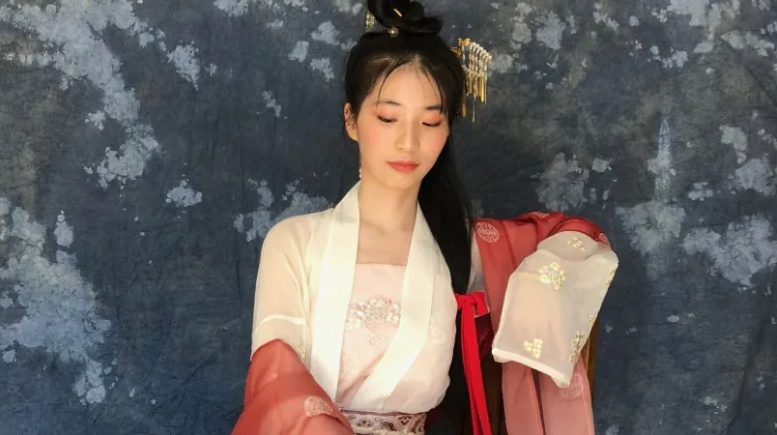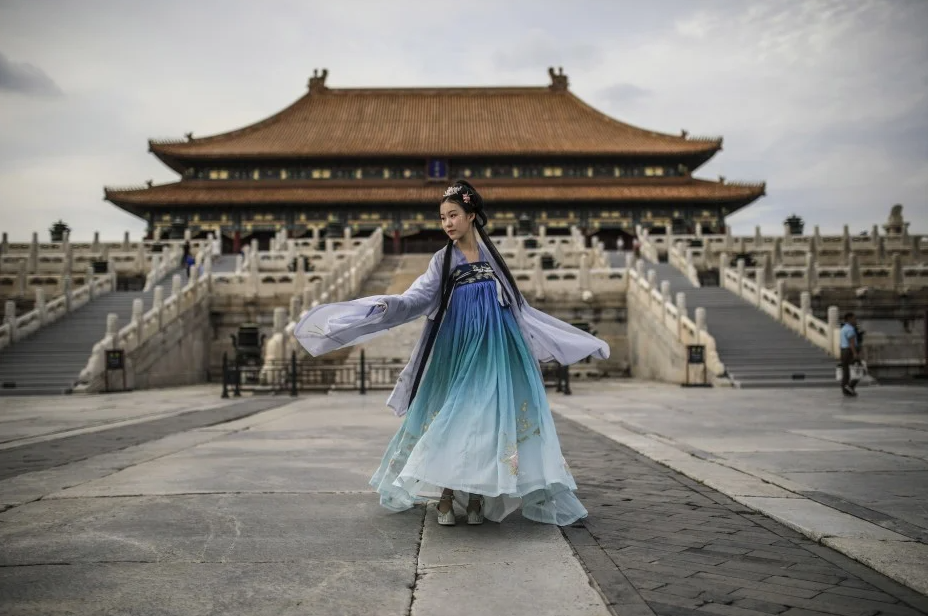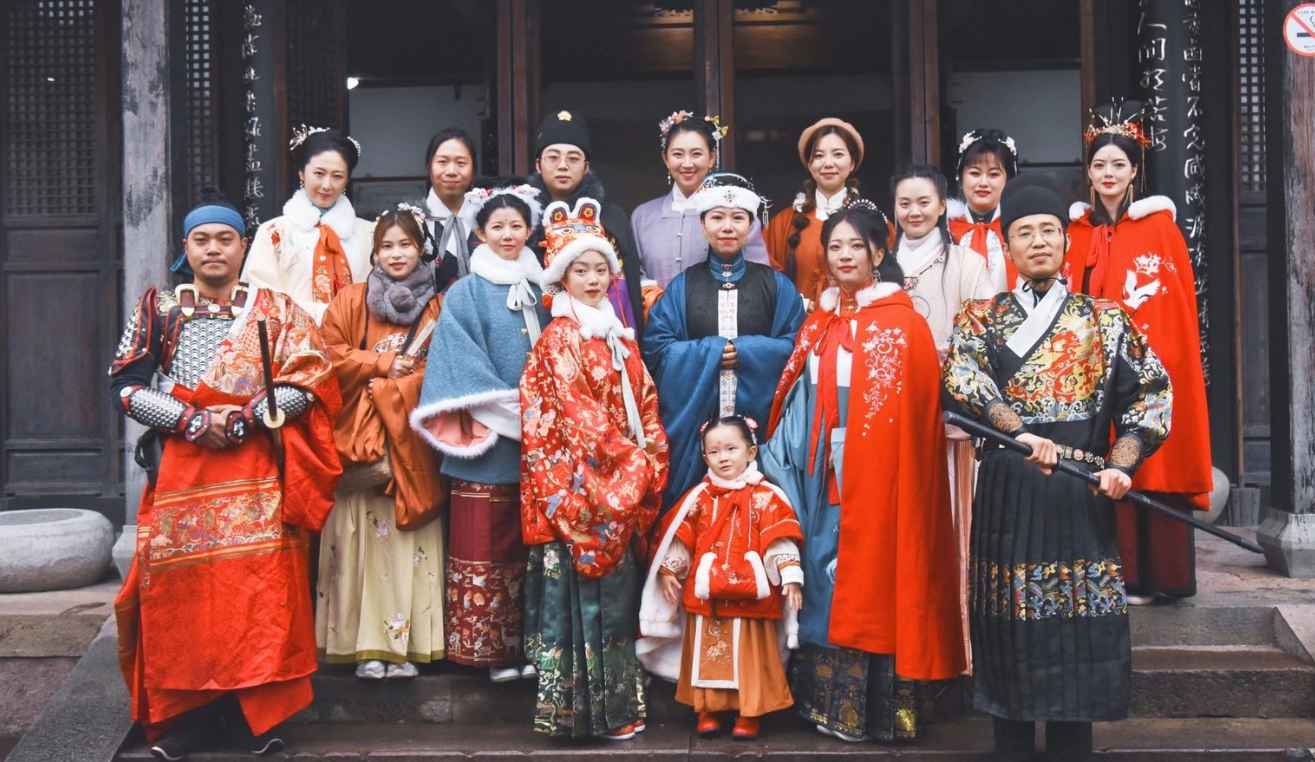Yes, Hanfu is experiencing a resurgence in China, especially among young people who view it as both a fashion statement and a symbol of cultural pride.
Historical Perspective
Origin of Hanfu
Hanfu traces its origins to the Han Chinese, the ethnic majority in China. According to historical records and archeological evidence, the style has roots in ancient dynasties like the Shang and Zhou. The attire consisted mainly of a yi (a type of tunic with narrow cuffs), a chang (an ankle-length skirt), and a bixi (a lengthy cloth attached at the waist). The simplicity and functionality of these garments served the people well, both in ceremonial and everyday life.
The adoption and standardization of Hanfu became more prevalent during the Han Dynasty, after which the style gets its name. During this period, Confucian philosophy played a significant role in solidifying the importance of Hanfu as it emphasized rites and ceremonies, often prescribing specific types of dress for different occasions.

Evolution Over the Dynasties
Hanfu has undergone significant changes over the millennia, adapting to the social, political, and cultural climates of each dynasty. For example, during the Tang Dynasty, the influence of other cultures along the Silk Road introduced new fabrics and decorative techniques into Hanfu designs. The styles were extravagant, reflecting the dynasty’s prosperity and openness to external influences.
By the time of the Ming Dynasty, Hanfu returned to its roots, focusing on traditional styles and patterns. This was partly due to the era’s emphasis on Confucian orthodoxy, and partly a political statement against the Mongol rule of the preceding Yuan Dynasty.
Throughout these different periods, variations in color, pattern, and garment structure served not only aesthetic purposes but also social functions, often indicating one’s status, occupation, or scholarly achievement.
Influence on Neighboring Cultures
Hanfu’s influence isn’t confined to China alone; it has had a considerable impact on the traditional garments of neighboring countries. For instance, the Korean Hanbok and the Japanese Kimono bear similarities in their basic structure to the Hanfu. Cultural exchange, trade, and sometimes political alliances facilitated this diffusion of style.
Countries along the Silk Road also felt the influence of Hanfu, absorbing elements into their native costumes. For example, Vietnamese Áo Dài shows some semblance to Hanfu in its silhouette. The legacy of Hanfu as a clothing style has thus transcended its geographic and ethnic origins, becoming a part of the broader East Asian cultural tapestry.
Cultural Significance
Hanfu as Cultural Heritage
Hanfu is more than just a style of clothing; it’s an integral part of Chinese cultural heritage. For the Han Chinese, it serves as a living relic that captures the essence of their ancestors’ wisdom, aesthetics, and way of life. The Confucian ideals of harmony and propriety deeply inform Hanfu’s designs. Even today, wearing Hanfu can be considered a form of cultural practice, connecting the individual with a lineage that goes back thousands of years.
Artisans who specialize in Hanfu tailoring often undergo rigorous training to master the ancient techniques. These craftsmen are seen as keepers of cultural wisdom, contributing to the style’s preservation for future generations. The fabrics, often made from silk or cotton, and the intricate patterns frequently tell a story, one that harks back to myths, legends, and historical figures relevant to Chinese culture.
Role in Traditional Festivals
Wearing Hanfu gains particular prominence during traditional Chinese festivals like Lunar New Year, Mid-Autumn Festival, and the Dragon Boat Festival. On these occasions, Hanfu serves as more than just attire; it becomes part of the ceremonial fabric that weaves the community together. During Lunar New Year, for example, it is common for families to wear Hanfu when paying respects to their ancestors, embodying the values of filial piety and community belonging.
Children, too, don Hanfu during these festivals as a rite of passage, instilling in them a sense of cultural identity from a young age. School events and community performances often incorporate Hanfu to educate and connect younger generations to their roots.
Symbolic Meanings
Each element of the Hanfu—from its color to its cut—has symbolic meaning. Red, for instance, is often associated with good fortune and joy, while yellow was traditionally reserved for the emperor, symbolizing his connection to the celestial. Some garments feature embroidery of dragons, phoenixes, or other significant symbols from Chinese folklore and Taoist cosmology.
The layers in Hanfu can also have specific meanings. A typical set might include an inner garment and an outer robe, each representing different aspects of life or philosophical concepts. For example, the inner garment often symbolizes the individual’s private self, while the outer robe represents social identity.
The significance extends to the types of knots used in the garments, each with its own symbolic meaning. For instance, certain knots are thought to bring luck, while others may signify longevity or prosperity.
Modern Revival
Hanfu Movement
The turn of the 21st century saw a rejuvenation of interest in Hanfu, often referred to as the Hanfu Movement. A significant proportion of young people in China have taken it upon themselves to rediscover and re-popularize this traditional form of dress. Colleges have even started Hanfu clubs, organizing events where students can showcase different styles and learn about their cultural significance.
The Hanfu Movement is not just about fashion; it’s a cultural statement. In a globalized world where Western styles often dominate the fashion landscape, many see wearing Hanfu as a way to assert their cultural identity. This movement finds support not only in China but also among overseas Chinese communities, serving as a cultural link for people who live far from their ancestral homeland.
Integration in Modern Fashion
The revival of Hanfu has also seen its integration into contemporary fashion. Modern designers are reinterpreting Hanfu elements to create garments that strike a balance between traditional aesthetics and modern practicality. These new designs often feature high-quality fabrics, intricate embroidery, and details that pay homage to traditional styles while fitting into a modern wardrobe.
Fashion shows in cities like Shanghai and Beijing often feature Hanfu-inspired collections, and they are receiving positive attention both domestically and internationally. The crossover into mainstream fashion introduces Hanfu to audiences who may not be familiar with its cultural and historical backdrop, broadening its appeal.
Influencers and Social Media Impact
In the digital age, social media platforms like Weibo, Douyin (Chinese version of TikTok), and Instagram have become essential tools for promoting Hanfu. Influencers who specialize in Hanfu styling attract massive followings. These online personalities not only showcase the beauty and versatility of Hanfu but also educate their audience about its historical and cultural significance.
Interactive platforms also allow for greater community engagement. Hanfu enthusiasts share tips on garment care, styling tutorials, and even history lessons, creating an online ecosystem dedicated to the appreciation and preservation of Hanfu. Through these platforms, what once was a niche interest has transformed into a widespread phenomenon capturing the imagination of millions.
Public Perception
Generational Differences
While the Hanfu Movement has largely been driven by young people, the older generation has its own set of views about the revival of this traditional dress. Younger folks often see Hanfu as a trendy fashion statement and an expression of cultural pride. They are the ones most likely to don Hanfu at cultural festivals, share their outfits on social media, and actively participate in Hanfu-related events.
In contrast, some older individuals, who grew up during times when Hanfu was not as prevalent, may view this trend with a blend of nostalgia and skepticism. While they appreciate the revival of traditional culture, they also question the authenticity and practicality of modern interpretations. This generation, influenced by historical events like the Cultural Revolution, may find the resurgence surprising or even jarring.
Regional Variations
Hanfu isn’t a monolithic entity but varies significantly across different regions of China, reflecting the diverse geography, climate, and local customs. For instance, in northern China, Hanfu styles are often made from thicker fabrics like wool to provide warmth, whereas in the southern regions, lighter materials like silk are more common.
In cities like Beijing and Shanghai, Hanfu enjoys considerable popularity due in part to a higher concentration of educational and cultural institutions. However, in more rural areas, the traditional attire might be reserved for special occasions like festivals or weddings, if it appears at all.
These regional variations in the perception and adoption of Hanfu make it a complex yet fascinating subject of study, revealing much about the diversity within Chinese culture itself.

Western Perspectives on Hanfu
Western perceptions of Hanfu are varied and evolving. For some, Hanfu is an exotic form of dress that encapsulates the mystique of the East. It’s not uncommon to see Hanfu pieces featured in international fashion shows or written about in Western media.
However, there are also instances where Hanfu gets tangled in discussions about cultural appropriation, especially when non-Chinese individuals wear it without understanding its cultural significance. In academic circles, Hanfu is studied as an example of cultural revival and its potential impact on global fashion trends and cultural exchange.
Economic Impact
Market for Hanfu
The resurgence of Hanfu is not just a cultural phenomenon; it’s also a burgeoning market with economic implications. Numerous brands and small businesses have sprung up to meet the increasing demand for traditional garments. These range from boutique establishments that offer custom-tailored pieces to large online platforms that sell mass-produced versions at a more affordable price point.
The sales of Hanfu, accessories, and even Hanfu-inspired merchandise like stationery or home decor have seen a steady rise. The market size has expanded significantly over the past few years, and analysts predict it will continue to grow, especially as the younger generation invests in these traditional garments not just for special occasions but also for everyday wear.
Tourism and Cultural Events
The popularity of Hanfu also has a trickle-down effect on tourism and cultural events. Cities with historical significance related to the Han Dynasty or other periods that featured Hanfu often host festivals where these garments are the focal point. Such events attract tourists and enthusiasts who contribute to the local economy by participating in workshops, buying local crafts, and, of course, purchasing Hanfu.
Moreover, sites with historical or cultural significance like palaces, museums, and temples also benefit. Visitors often rent or buy Hanfu to enhance their experience, which in turn increases revenue for these venues. Even Chinese tea ceremonies and traditional performances are incorporating Hanfu, creating a comprehensive cultural experience that boosts tourist interest and engagement.
Contributions to the Fashion Industry
The rise of Hanfu has provided a fresh avenue of creativity and commerce within the fashion industry. Many established designers are incorporating Hanfu elements into their collections, both for domestic audiences and for international fashion shows. This not only diversifies their portfolio but also introduces traditional Chinese aesthetics to a broader market.
In addition, the craftsmanship involved in creating authentic Hanfu pieces—such as hand embroidery and traditional dyeing techniques—provides employment opportunities for artisans who specialize in these skills. As the Hanfu market grows, it’s likely that these traditional crafts will gain more recognition and commercial viability, both within China and globally.
Political Context
Government Support and Regulation
The Chinese government has shown varying degrees of support for the Hanfu Movement. On one hand, Hanfu aligns with the government’s broader objectives of promoting Chinese culture and history. This is often manifested through state-sponsored cultural events where Hanfu is showcased, or even educational programs aimed at reviving traditional arts and crafts associated with Hanfu.
However, the government also exercises regulation over the movement to ensure it aligns with the official narrative. For example, guidelines may be issued on how Hanfu should be portrayed in media or public events. While not directly intervening in the market, the state’s stance on Hanfu can influence public perception and by extension, its commercial success.

Hanfu and National Identity
The revival of Hanfu isn’t just a fashion trend; for many, it’s a statement about Chinese national identity. In a world where China is increasingly influential, many people see the Hanfu Movement as an opportunity to assert a uniquely Chinese cultural identity. It’s not just about nostalgia or aesthetics; it’s a form of soft power, an assertion of cultural uniqueness in the global arena. This aligns closely with China’s broader goals of cultural diplomacy and international influence.
Controversies and Debates
However, the Hanfu Movement isn’t without its controversies. One of the most heated debates revolves around the question of inclusivity. Hanfu primarily represents the Han Chinese, who make up the majority of China’s population. This has led to discussions about whether other ethnic groups within China are being marginalized or overlooked in this cultural revival.
Moreover, the international spread of Hanfu has sparked debates around cultural appropriation. When non-Chinese individuals adopt Hanfu, questions arise about whether this amounts to appreciation or appropriation, especially when the individuals lack a deep understanding of the garment’s historical and cultural context.